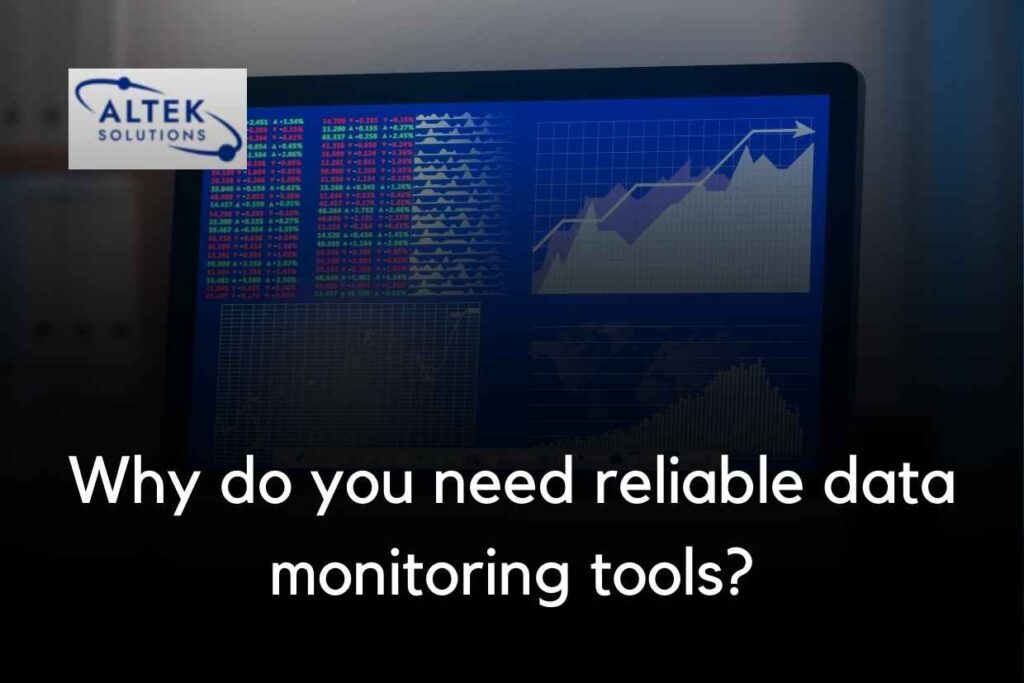Do you ever feel like you’re drowning in data but lacking insight? As our world becomes increasingly digitised, businesses and individuals alike are struggling to stay afloat amidst a sea of information. Monitoring systems promise to be a life preserver, but only if their signals can be translated into decisive action. In this article, we’ll dive into the evolution of monitoring, from gathering data to generating insights to enabling decisions. Just like learning to swim, it takes practice to become proficient, but the rewards are worth it. Soon, you’ll be riding the waves of your monitoring system rather than gasping for air.
The Evolution of Monitoring
In the early days of computing, monitoring meant staring at a screen, waiting for something to break. System administrators hunched over their terminals, vigilantly tracking the blinking lights and spinning tapes that indicated the system was still functioning. It required human eyes glued to a display 24/7. Thankfully, those days are long gone. Modern monitoring systems watch for us, triggering alerts when predefined conditions are met. Once a lowly smoke detector, monitoring tools have evolved into sophisticated sentries, detecting subtle anomalies in vast seas of data. This evolution accelerated along with increasing digitisation. More monitoring systems and processes were instrumented, generating exponentially more signals. Traditional monitoring struggled to keep up, still dependent on humans to observe and interpret.
The Advantages of Modern Monitoring Systems.

Gone are the days of system administrators vigilantly watching blinking server lights, waiting for failures. Modern monitoring systems observe us, combining comprehensive instrumentation with intelligent analytics. The benefits of monitoring systems are tremendous.
- Complete visibility – Monitor everything from infrastructure to applications to business processes.
- Rapid detection – Machine learning spots anomalies as they emerge, enabling quick response.
- Predictive intelligence – Based on statistical models, forecast issues before they become critical.
- Automated response – Take action programmatically to resolve common incidents.
- Centralised dashboard – Aggregate monitoring data for at-a-glance observability.
- Real-time alerts – Push notifications when predefined conditions are met.
- Business alignment – Track metrics calibrated to organisational goals.
- Continuous optimisation – Constantly tune monitoring and actions to maximise value.
With these advantages, monitoring evolves from reactive break and fix to proactive optimisation. The monitoring system gains senses, a brain, and nervous pathways to take corrective actions automatically without human involvement. This is the power of modern monitoring solutions.
The solution was to augment monitoring systems with intelligence. Rather than just passively gathering data, they could analyse it in real-time. Machine learning enabled them to baseline normal behaviour, detect emerging issues, and predict future failures. The system transformed from a superficial observer into an insightful companion. Of course, this intelligence requires data and lots of it. As legendary statistician W. Edwards Deming noted, “Without data, you are just another person with an opinion.” Collecting comprehensive data provides context and understanding. The key is instrumenting the right signals. Like choosing ingredients for a gourmet meal, quality beats quantity. Thoughtfully selected metrics tailored to organisational objectives can lead to actionable insights.
From Data to Decisions.
Generating insights is an important step but not the end goal. Monitoring systems must enable decisive actions that improve outcomes. The path from raw data to informed decisions involves navigating four key steps:
- Collection -Harvesting a wide variety of signals provides fertile soil.
- Aggregation – Combining and correlating data plants the seeds of insight.
- Analysis – Examining combined data cultivates understanding.
- Action – Acting on insights reaps the rewards.
Progressing through each step transforms disconnected data points into decisive actions. Let’s explore how to nourish this evolution.
Collection
The first step is harvesting Performance metrics, application logs, user behaviour, network traffic, and more, all representing signals to collect. Think broadly. For example, don’t just monitor server infrastructure. Track user sentiment through surveys, social media, and support tickets. This surrounds isolated technical indicators with real-world context. Automate collection where possible. Manual tracking can’t keep pace with the growth of data. Solutions like logs and API integrations enable seamless signal gathering. Don’t over-filter at this stage. Capture a wide variety of metrics now for flexibility later. Storage is cheap, but missing data is expensive.
Aggregate.
Aggregating data combines disparate signals into a unified whole. Look for correlations between metrics to discover new insights.For instance, linking application performance with infrastructure health might reveal which servers or services are degrading user experience. This connects technical metrics to business outcomes.
Effective aggregation requires
- Correlation – How do signals relate to each other?
- Context – How do signals relate to business goals?
- Continuity – How do signals relate over time?
Skilful correlation spotlights interdependencies. Providing business and historical context illuminates meaning.
Analysis
Now comes the brainwork – analysing aggregated data to derive actionable insights. Ask smart questions. Don’t just take measurements at face value. Consider what deviations from baseline signify, what correlations indicate, and what predicted capacity requires. Leverage tools like machine learning, predictive analytics, and artificial intelligence to build sophisticated models. Systems that continuously learn and adapt provide deeper insights. Balance automation with human expertise. Allow tools to pre-process and alert on common issues while empowering people to investigate novel problems. Regularly tune, refine and expand analytical capabilities based on new questions and data. Analysis should inform collection to fuel an ever-improving cycle.
Action.
The rubber meets the road when insight informs action. This completes the circuit, channelling monitoring signals into improved outcomes. Make conclusions based on careful analysis. Data with thoughtful interpretation is meaningful. Don’t let unvalidated assumptions undermine actions.Make decisions as automated as possible. Embedding analytical insights into automated responses maximises speed and consistency. Only defer to humans where needed. Align actions to desired objectives. Ensure technical interventions trace back to business goals. Monitor outcomes to confirm effectiveness. To maximise impact, scale centralised insights out to the entire organisation. Empower everyone to act based on real-time intelligence.
Putting Insights into Actions.

The evolution from raw data to improved performance requires navigating the four steps of collection, aggregation, analysis and action in concert. Advances in technology now allow organisations to complete this cycle automatically. The latest monitoring systems fuse an analytical brain with sensory tentacles reaching throughout the digital landscape. This generates a natural intelligence that permeates the environment. Insights trigger automated interventions that keep operations running smoothly. Resources are optimised, issues are pre-empted, and service levels are upheld with minimal human involvement. The key is translating insights into concrete actions and decisions.
Detecting Issues.
Monitoring helps quickly identify emerging issues before they escalate. Dashboards highlight problems, while configurable alerts trigger when thresholds are crossed. Teams can rapidly troubleshoot root causes and resolve issues with minimal downtime. Catching things early prevents significant outages.
Informing Investments.
Data on resource utilisation and performance guides to intelligent investments. Identifying underutilised assets to consolidate or overloaded systems to scale out optimises spending. Forecasting also predicts future capacity needs before they become bottlenecks.
Guiding Business Decisions.
Linking monitoring system data to business KPIs measures the real-world impact of technology initiatives. This helps executives to make data-driven decisions on priorities and strategy.
Enabling Automation.
Monitoring can automatically trigger remediation actions like restarting services, scaling capacity, or re-routing traffic. Encoding policies based on monitoring insights creates a self-optimising environment. The key is making monitoring actionable and setting alert thresholds, providing role-based dashboards, enabling automation, and more. This evolves the monitoring system into a real-time optimisation engine.
Here are real-world examples of monitoring driving significant gains
- Microlise increased vehicle utilisation by over 10% by monitoring asset telemetry to optimise routing and maintenance.
- AppDynamics improved application performance by up to 20x by monitoring and automatically re-allocating resources to high-load areas.
- Hyatt Hotels saw over $100M in incremental revenue by optimising online ad spending based on real-time occupancy data.
- Hands-on-Bank boosted online banking adoption by 280% by monitoring and improving new user onboarding experiences.
The common thread is a tight loop from data to insight to action. Monitoring provided visibility, analysis uncovered opportunities, and leaders made informed decisions that drove substantial outcomes. Like learning to swim, leveraging monitoring systems takes practice. Begin in the shallow end, instrumenting a few critical systems. Expand monitoring to more areas as comfort increases, aggregating and correlating more signals. Build analytical capability in bite-sized chunks. Start with simple rules-based alerts, then use machine learning in monitoring systems to detect anomalies. Slowly increase automation as the system proves itself trustworthy.
Remember the human element. Keep adjudicating edge cases, overriding faulty algorithms, and double-checking results. Augmented intelligence combining people and technology outpaces either alone. With growing proficiency, you’ll ride the crest of data rather than be overwhelmed by it.
As monitoring systems become automated nervous systems, they shrink from view. You’ll come to expect everything to run smoothly at all times. Of course, the sea never rests. There will always be currents to navigate and storms to weather. But with a mature monitoring system in place, you’ll feel confident riding out whatever challenges come. You can unlock greater visibility, control, and performance by leveraging monitoring as an adaptive intelligence. Your organisation will evolve from flailing in the data set to riding the waves of insight. So suit up, grab your board, and let’s hit the surf! The water’s fine.
Conclusion.
This article explored the power of monitoring systems, from data collectors to insight engines. When instrumented strategically and armed with intelligence, they become robust nervous systems for organisations. Modern monitoring maximises performance, availability, and efficiency by automating the path from signals to decisions.
The key is navigating the four steps from collection to action. Harvesting a wide array of metrics provides fertile data soil. Aggregating datasets together surfaces crucial correlations. Rigorous analysis generates actionable insights. Enacting intelligent responses completes the cycle, enabling continuous learning and improvement.
To embark on the journey, audit current monitoring capabilities first. Identify gaps in visibility, analytics, and integrations. Pilot modern solutions in targeted areas before expanding reach. Stay focused on driving insights into demonstrable business value.
With consistent iteration, monitoring transforms from reactive troubleshooting to proactive optimisation. You’ll evolve raw data into powerful insights to guide your organisation’s most critical decisions and outcomes. The result is maximised efficiency, availability, and impact. It’s time to unleash monitoring’s full potential. Let’s get started.





